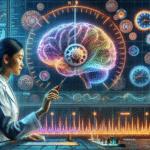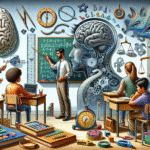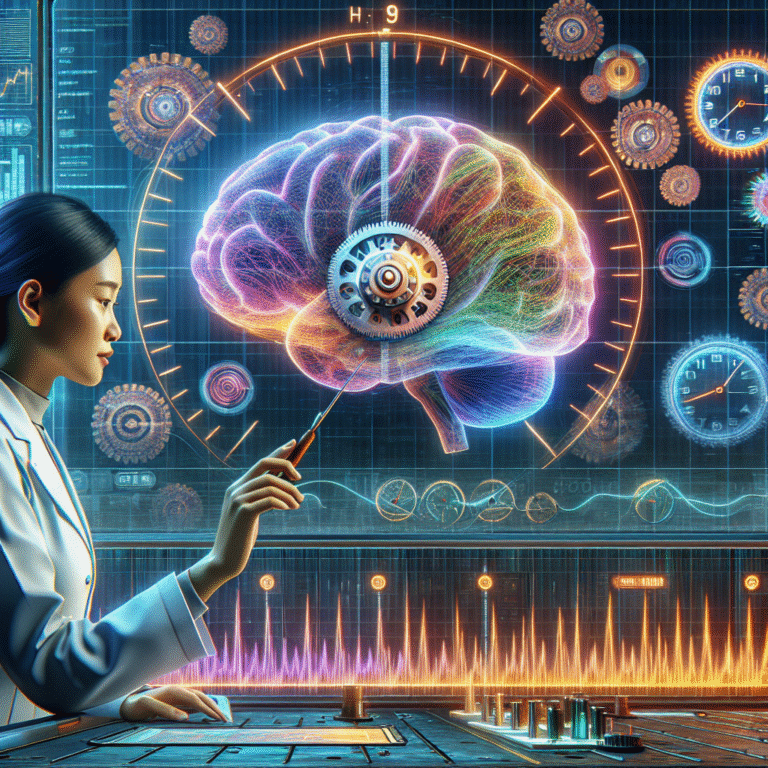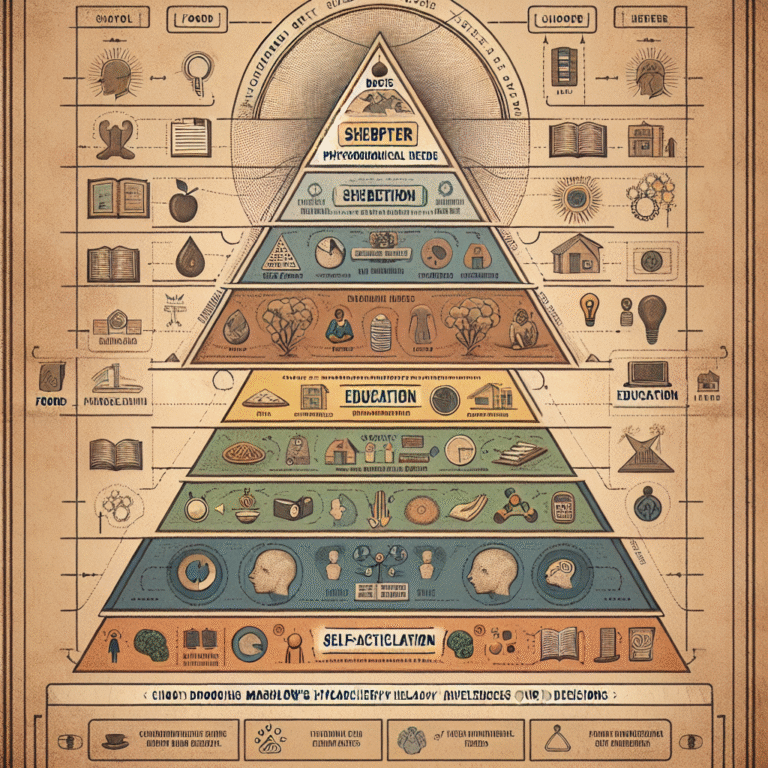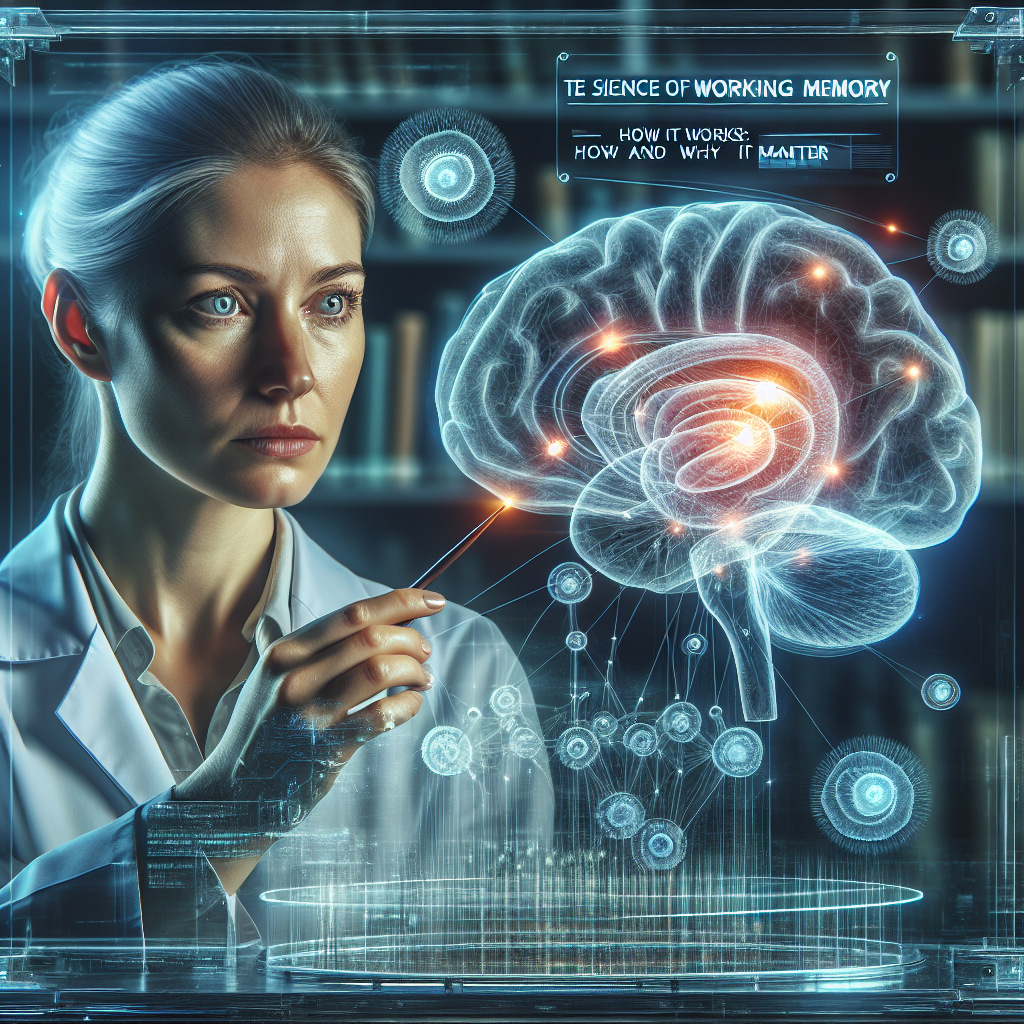
Introduction
Imagine you’re in a vibrant coffee shop, engaging in a lively conversation while simultaneously keeping track of your to-do list. How are you managing to juggle all that information? The secret lies in a fascinating cognitive process known as working memory. Understanding The Science of Working Memory: How It Works and Why It Matters isn’t just an academic exercise; it has profound implications for everyday life, learning, and even our emotional well-being.
Working memory is essentially the brain’s notepad, holding onto information for brief periods while we manipulate it. It plays a crucial role in everything from problem-solving and decision-making to social interaction and comprehension. In this comprehensive guide, we’ll explore the intricacies of working memory, its underlying mechanisms, its significance, and the latest findings in neuroscience.
What is Working Memory?
The Definition
Working memory refers to the system responsible for temporarily holding and processing information. Unlike long-term memory, which stores information for extended periods, working memory is highly versatile but has a limited capacity. It is often likened to a mental workspace, where thoughts, ideas, and information coexist temporarily.
How It Functions
The Science of Working Memory: How It Works and Why It Matters can be broken down into two crucial processes:
- Storage: Holding onto information.
- Manipulation: Modifying or organizing that information for further use, like solving a math problem or navigating a conversation.
The Components of Working Memory
According to cognitive psychologist Alan Baddeley, working memory can be divided into four main components:
- Central Executive: The command center that oversees and coordinates all other components.
- Phonological Loop: Handles verbal and auditory information.
- Visuospatial Sketchpad: Manages visual and spatial data.
- Episodic Buffer: Integrates information across different modalities.
Table 1: Components of Working Memory
| Component | Function |
|---|---|
| Central Executive | Directs attention and coordinates tasks |
| Phonological Loop | Processes auditory and verbal info |
| Visuospatial Sketchpad | Handles visual and spatial tasks |
| Episodic Buffer | Combines information from different sources |
The Neuroscience Behind Working Memory
The Brain Regions Involved
The intricacies of The Science of Working Memory: How It Works and Why It Matters are best understood by examining the brain regions implicated in this process. Key areas include:
-
Prefrontal Cortex: Central to higher cognitive functions, this area is crucial for executing tasks involving working memory.
- Parietal Lobes: These lobes assist in the manipulation of visual and spatial information.
Neurotransmitters and Working Memory
Research indicates that neurotransmitters like dopamine play an essential role in the functioning of working memory. Higher dopamine levels can facilitate better working memory performance, while deficits may impair cognitive functions.
Case Study: The Impact of Dopamine on Working Memory
A study conducted on patients with Parkinson’s disease, which affects dopamine levels, illustrated that these patients often struggle with tasks requiring working memory. This correlation underscores how vital neurotransmitters are for cognitive processes.
Why Working Memory Matters
Everyday Applications
Working memory impacts numerous aspects of our daily lives, such as learning, decision-making, and social interactions. For instance, students with robust working memory capabilities often excel academically, as they can easily hold and manipulate information during lessons.
Case Study: Educational Impact
A primary education study showed that students with enhanced working memory techniques, such as chunking information, significantly outperformed peers on standardized tests. This finding emphasizes why educators should integrate memory-boosting strategies into curricula.
Emotional and Social Implications
Working memory also plays a critical role in emotion regulation and social interactions. Research suggests individuals with better working memory capabilities tend to exhibit superior emotional intelligence, enabling them to navigate social nuances effectively.
Chart 1: The Emotional-Academic Nexus
| Working Memory Skill | Emotional Intelligence Level | Academic Performance |
|---|---|---|
| High | High | High |
| Medium | Medium | Medium |
| Low | Low | Low |
Enhancing Working Memory
Techniques and Strategies
Understanding The Science of Working Memory: How It Works and Why It Matters goes beyond mere knowledge; it provides actionable insights that can lead to significant improvements. Below are some techniques for enhancing working memory:
-
Chunking: Breaking information into manageable parts (e.g., memorizing phone numbers).
-
Visualization: Associating information with images or spatial layouts.
-
Mind Mapping: Structuring information visually can help with retention and recall.
- Traditional Note-taking: Writing notes by hand promotes deeper engagement with the material.
Case Study: Chunking in Real Life
In a corporate training program, employees trained in chunking performed 20% better on memory recall tasks compared to those who weren’t. This practical approach highlights how strategic thinking can lead to concrete benefits in the workplace.
The Influence of Technology on Working Memory
The Digital Age Dilemma
With the rise of digital technology, concerns arise regarding our cognitive abilities. Constant notifications, multitasking, and information overload may potentially hinder our working memory efficiency.
Research Findings
Recent studies indicate that heavy reliance on digital devices leads to diminished working memory capacity. With distraction at an all-time high, understanding how to manage technology becomes essential.
Strategies for Digital Balance
To counteract this, individuals are encouraged to take digital breaks, employ mindfulness techniques, and establish boundaries around tech use.
Future Directions and Ongoing Research
The Role of Artificial Intelligence
Emerging studies are investigating how artificial intelligence can potentially assist in understanding and enhancing human working memory. AI tools can help customize learning experiences that align with individual memory profiles.
Ongoing Neuroscience Research
Researchers continue to explore the neurobiological foundations of working memory. Expect future findings to bring exciting insights that could lead to improved educational practices and cognitive therapies.
Conclusion
The Science of Working Memory: How It Works and Why It Matters extends far beyond academic discussions—it’s pivotal in our daily lives, impacting learning, decision-making, and emotional intelligence. By nurturing our working memory through effective strategies like chunking, visualization, and mindful technology use, we set ourselves up for success in various life arenas.
Investing time in understanding and enhancing our working memory isn’t merely an intellectual endeavor; it’s a pathway to unlocking our full cognitive potential.
FAQs
1. What is the difference between working memory and short-term memory?
While both involve temporary storage, working memory includes manipulation of information, whereas short-term memory focuses solely on retention.
2. What are the signs of poor working memory?
Signs may include difficulty following multi-step directions, forgetting recent conversations, and challenges with problem-solving.
3. Can working memory be improved?
Absolutely! Techniques like chunking, visualization, and regular mental exercises can help enhance working memory.
4. Does age affect working memory?
Yes, as we age, working memory capacity tends to decline. However, certain cognitive exercises can help mitigate this effect.
5. How does nutrition impact working memory?
A balanced diet rich in omega-3 fatty acids, antioxidants, and whole grains supports brain health and can enhance cognitive functions, including working memory.
By exploring The Science of Working Memory: How It Works and Why It Matters, we empower ourselves to make informed choices that can lead to improvements in our cognitive abilities and overall quality of life. Embrace these insights and enhance your working memory today!




